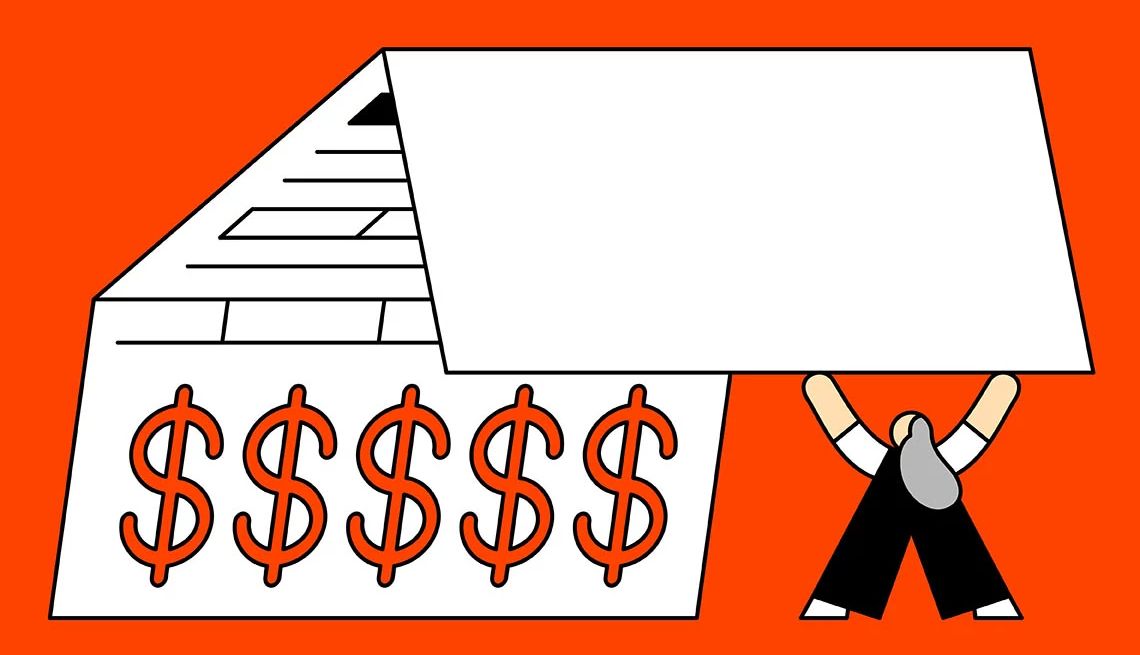AARP Hearing Center


There is a common tax myth that getting a big refund is a good thing. In reality, it means that you let the government hang on to your money interest-free. But it still beats the alternative: a tax bill.
Finding out that you owe federal or state income taxes can feel like adding insult to injury after having taxes withheld from paychecks or making quarterly estimated payments throughout the year. It also can create a real financial strain if you don’t have cash on hand to cover your tax bill.
You can request an extension to push the deadline for filing your 2024 tax return to Oct. 15, but it won’t give you more time to come up with the money you need. Your federal taxes are due by the April 15 deadline, with some limited exceptions for taxpayers in certain IRS-declared disaster areas.
If you don’t pay what you owe in full when the taxes are due, the IRS charges a failure-to-pay penalty of 0.5 percent of the amount owed per month — up to a maximum of 25 percent of your unpaid taxes, plus interest.
Failing to file a return altogether comes with even stiffer penalties. If you don’t file by the deadline, the IRS charges a penalty of 5 percent of the amount due, up to a maximum of 25 percent of your unpaid taxes. Plus, interest accrues at a rate of 3 percent, compounding daily.
The good news: The IRS offers several options for taxpayers who can’t pay their bills in full. Additionally, there are several strategies to quickly generate cash to cover your tax obligations.
4 IRS payment options
The IRS offers two types of payment plans, which you can apply for at IRS.gov/paymentplan. It also provides options to pay less than you owe or the ability to delay payment for taxpayers who are experiencing financial hardship.
1. The short-term payment plan. You pay the amount you owe in 180 days or less. To qualify, you must owe less than $100,000 in combined taxes, penalties and interest. “The cost of this plan is a zero setup fee to apply,” says Jose Sanchez, a certified financial planner (CFP) in Albuquerque, New Mexico. “However, you will be responsible for accrued penalties and interest until the balance is paid in full.” You can pay electronically via your bank account, by check, money order, debit or credit card. The fee for using a debit card is $2.10 or $2.15, depending on the third-party processor. If you use a credit card, you’ll pay a fee of 1.75 percent or 1.85 percent, depending on the third-party processor.
2. The long-term payment plan. This installment agreement is available for taxpayers who owe $50,000 or less in combined taxes, penalties and interest. It requires a setup fee of $22 if you opt to pay via automatic monthly withdrawals from a checking account or $69 for monthly payments by check, money order, or debit or credit card. Fees can be waived or reimbursed for certain low-income applicants. “Similar to the short-term payment plan, you’ll be responsible for both accrued penalties and interest over the life of the payment plan,” Sanchez says.



































































More From AARP
6 Tax Breaks If You Have an Adult Dependent
Caring for a parent or other family member could cut your income tax bill
Where Is My 2024 Federal Tax Refund?
The IRS offers an online tool that will help you track your payment
AARP State Tax Guides: What You’ll Pay in 2024
Have you checked out our tax guide for your state yet?
Recommended for You